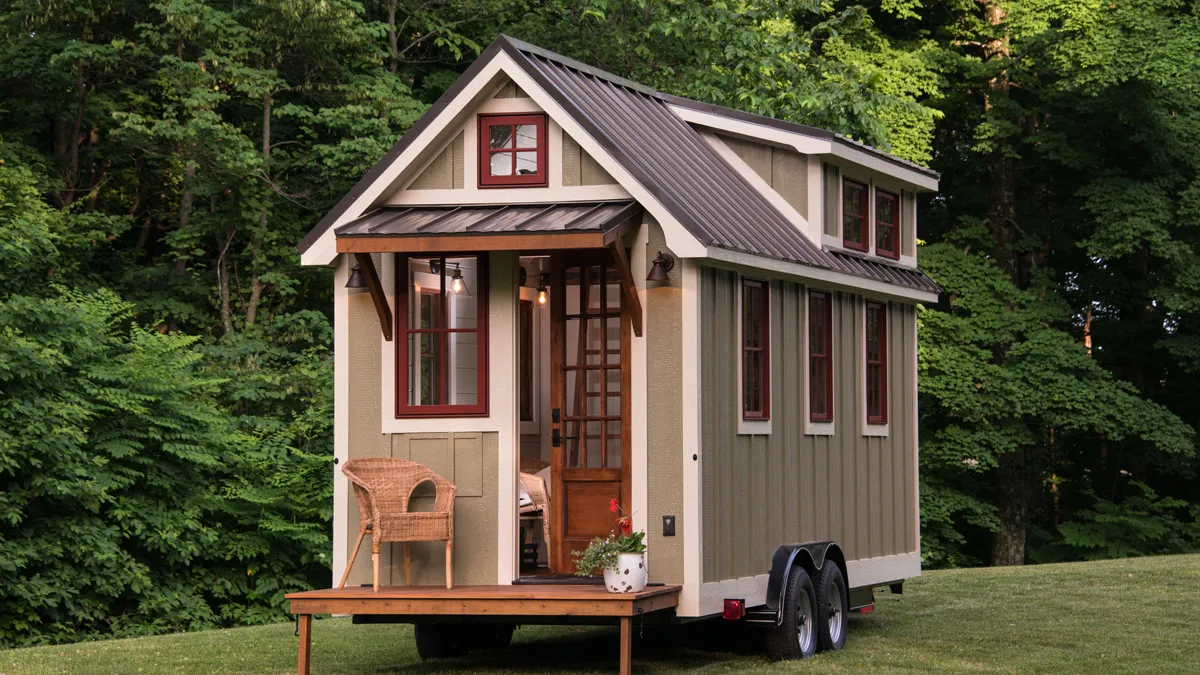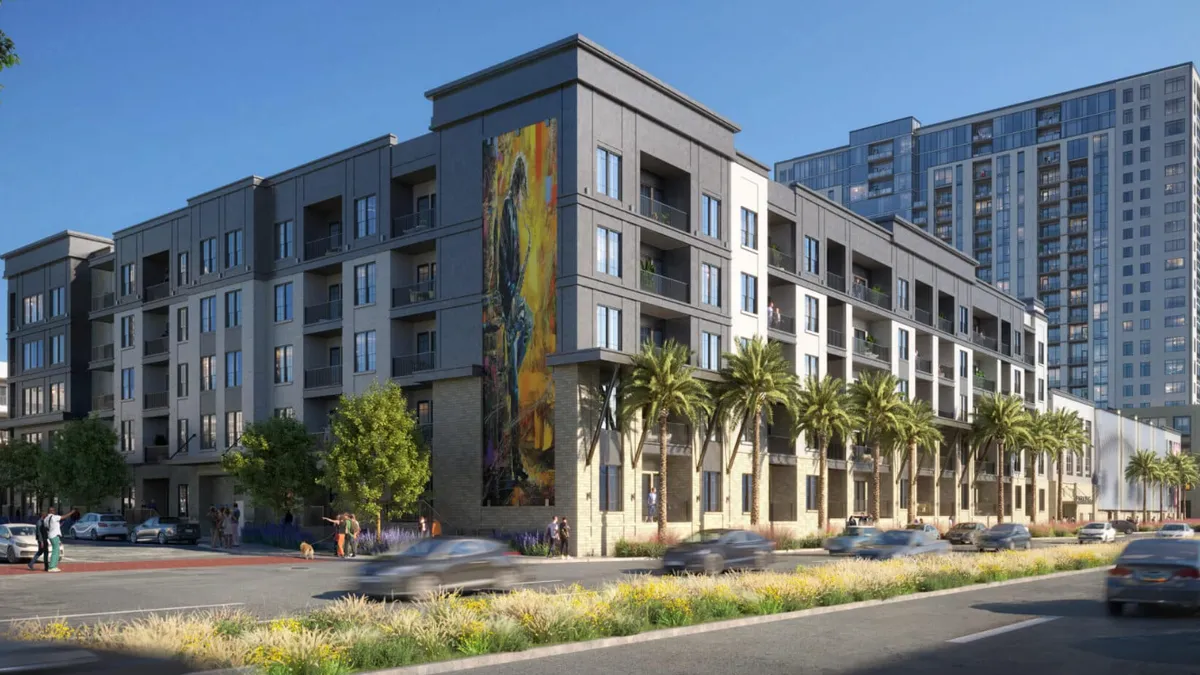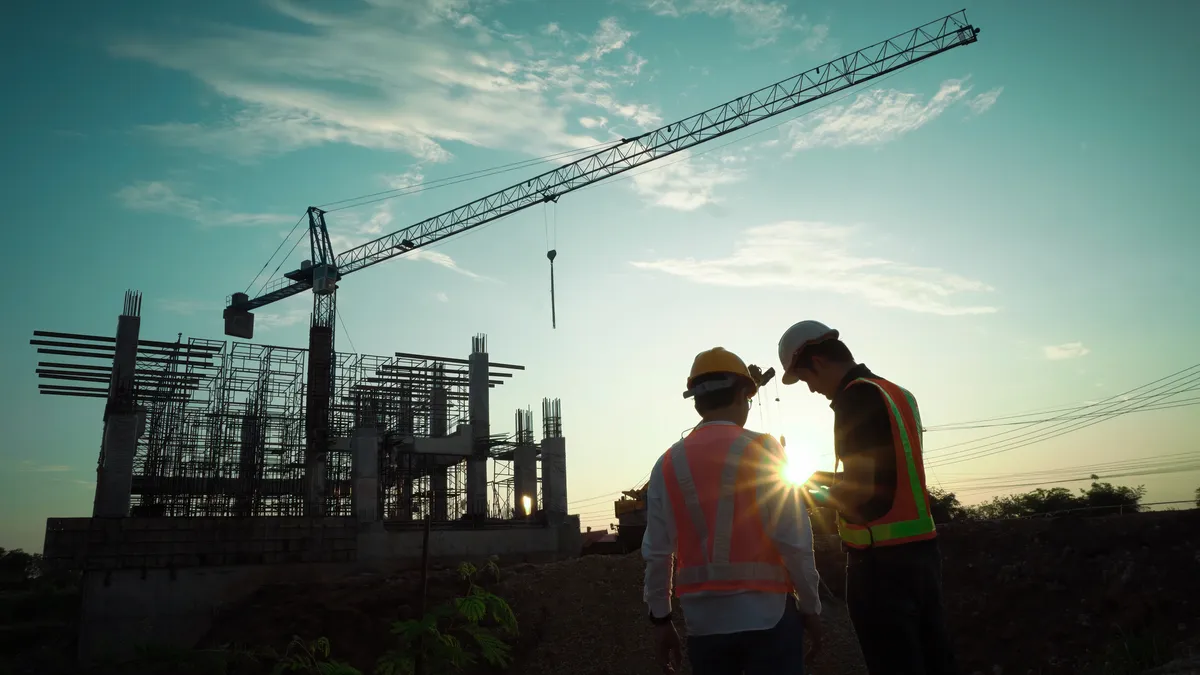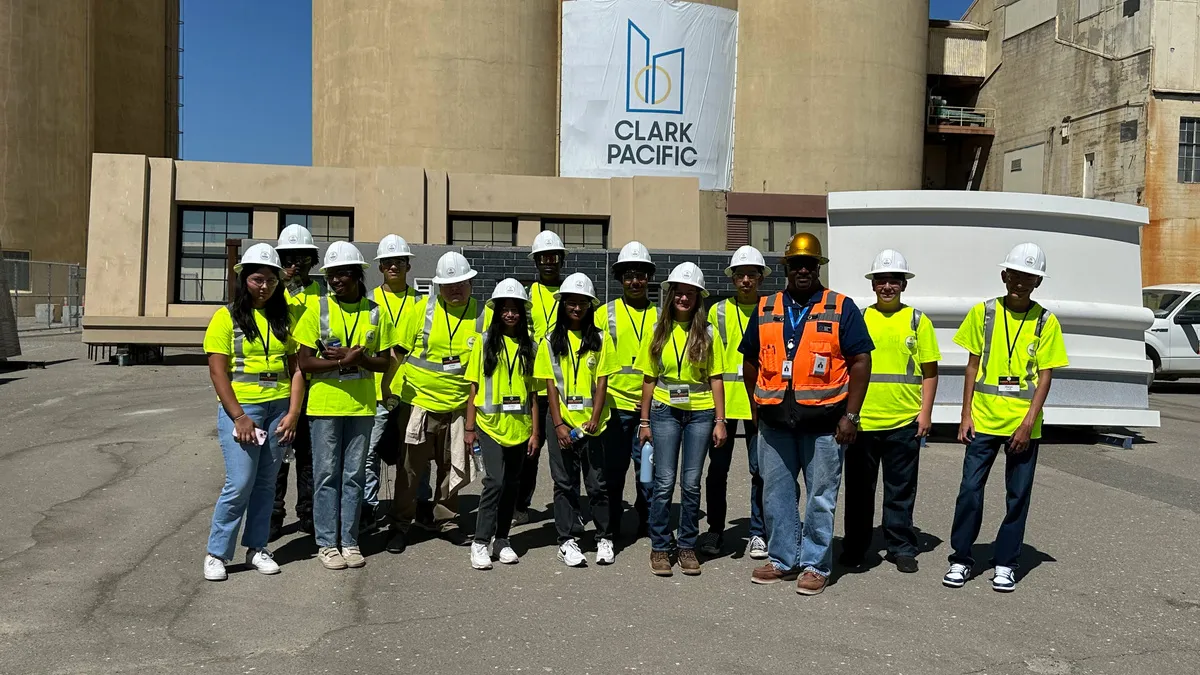Editor's note: The following is the first installment of Construction Dive's new "Tiny house trends" series, which will feature interviews with tiny home builders.
Doug Schroeder, a 20-year veteran of the homebuilding industry, is considering a big career move. Or rather, a small one.
Schroeder founded Alabama-based Timbercraft Tiny Homes late last year as a side project to his main homebuilding business. But he quickly discovered the demand for tiny homes was stronger than he ever imagined. And now, he has tentative plans to shutter his traditional building business — which typically pulls in about $700,000 in annual revenue — to focus exclusively on the tiny structures.
His story
Although Schroeder was first introduced to the growing trend of tiny homes through “The Small House Book” by Jay Shafer, he always knew he preferred smaller spaces. “I have an interest in design. Particularly, I like scale. To me, when a house gets too big, you lose the appeal of a lot. I kind of like smaller homes,” he told Construction Dive.
Throughout the winter of 2014, Schroeder worked on building his first 150-square-foot tiny house on a trailer as an experiment. He continued to construct large homes full-time, but ended up spending about 450 hours of his free time working on the model tiny house during evenings and weekends.
Throughout the process, Schroeder shared the project’s progress on Craigslist to gauge interest from the public. Before long, he was overwhelmed with interest from both potential customers and media outlets. HGTV, for example, contacted him with an interest in featuring his finished product on its “Tiny House Hunters” show. The couple that later bought that home, however, opted not to be included in the show.
After completing the project in May, Schroeder said he “was really surprised by all the response and the widespread interest in this, and it wasn’t even finished yet.” As a result, he decided to create Timbercraft Tiny Homes and “just see how it goes.”
He first hired a photographer to take professional shots of the home’s exterior and interior — which is notoriously difficult to photograph — and had his website created. Three days after finishing that first house, a couple came to take a look. They decided to make a few changes and ordered their own version based off of the model. The next day, another couple came and decided to buy the home. And the third day, a woman visited who was interested in purchasing that same house.
All of that interest in such a short amount of time led Schroeder to realize this new business could be a profitable option. “I still build some big homes. I have one under construction right now and one more starting this fall,” he said. “But honestly, if the orders keep coming in, I will be phasing completely out of the big ones. I’m feeling it out now. I really enjoy the smaller homes. I really want to see if that works, so that’s my focus.”
Construction process
Schroeder completed nearly all of the work on that first tiny house himself, with the exception of some outside help for painting and plumbing. He said if his business continues to grow and take in more orders, he will seek to hire more help. Schroeder is currently working on one tiny house and has orders in for two more.
But Schroeder added that craftsmen working on tiny houses need to adopt a different approach than when working on large houses. “With the tiny house, you’re not building by the square foot. You’re building by the square inch. There’s no mass producing,” he said. “You don’t get a crew in there and knock one out real quick. You have to do everything right.”
He builds most of his houses on trailers but has also constructed one on skids. He prefers the trailers due to their versatility. When constructed on wheels, the tiny houses can be driven to anywhere in the country. With skids, the structures need to be moved by hired professionals.
More details about the construction process include:
Building time: 2-2 ½ months from start to finish
Size: 8 ft. x 16 ft. up to 8 ft. x 24 ft. (on wheels); up to 12 ft. x 28 ft. (on skids)
Weight: Between 7,000 lbs. and 9,000 lbs.
Price: Varies from $35,000 to $55,000 (and even more for a high-end custom build)
Standard features: Fold-up porch in back, electric a/c unit with heat pump, 2-burner propane cooktop (see full list of features here)
Non-standard features: Double lofts, tile shower surround, washer/dryer unit, wired for solar panels
Building challenges
Constructing a tiny house may seem easy, but the conversion of the building process from a large scale to a small one doesn’t come without its challenges.
“You have to kind of completely rethink everything. Everything is down to the inch,” Schroeder said.
On the plus side, tiny house construction lends itself to a more controlled environment, as it is completed entirely indoors and doesn’t come with the threat of weather problems.
Potential challenges, however, come with the unique problem of needing to build a house that can travel down the road at fast speeds and be structurally sound.
On trend
So far, all of Schroeder’s homes have been purchased by people seeking a new primary living space. Most of them are choosing to downsize and start a new lifestyle. “People are putting a lot of thought into it. It’s not impulse buys,” Schroeder said. “They’re practicing by taping off rooms and trying to live in just two rooms. They’re giving away their stuff. And they’re serious about it. They’re cash buyers, typically.”
None of the homes Schroeder has sold so far have gone to customers looking to completely leave the grid, which often coincides with building or purchasing a tiny home. He expects that soon, someone looking to go completely off-grid will place an order with him, and he will do his best to accommodate any of their requests.
But why all the fuss about tiny homes? While some expected them to be a passing fad, they have proven themselves to be a popular alternative to the rising prices of megahouses. With so much demand and so few big builders jumping into the market, smaller craft builders have been able to create lucrative tiny house businesses.
During the PCBC builders' show in June, tiny houses were discussed among scores of building executives. Amy Albert, editor in chief of Professional Builder, said industry professionals should keep an eye on the growing trend, as it could have major implications for housing. But Nick Lehnert, executive director of KTGY, said he believes big building companies are hesitant to test the waters of the new market, despite growing demand, because "builders have a lemming mentality."
However, the trend hasn’t been limited to just builders and customers. Shows like “Tiny House Nation” and “Tiny House Hunters” have captured worldwide attention.
Schroeder attributes this fascination to what he calls the “cute factor.” But in addition to that aesthetic attraction, he thinks people are tired of trying to “maintain that American dream with the big home and the mortgage.”
“The people that are actually doing it are people who I think are sick and tired of throwing money away,” he said. Schroeder added that small homes are ideal for people with jobs that keep them on the move, as the properties on wheels are mobile and can be driven anywhere they need to go. “There’s a lot of freedom, and that appeals to a lot of people,” he said.
He cautioned that although a wide variety of people find tiny houses fascinating, not everyone could adopt that lifestyle. “There’s a lot of appeal by a lot of people who would never be able to live in it,” he said.
The future
Schroeder never expected to garner this amount of attention for his construction work, but he’s going to go along for the ride and see what happens next. And he doesn’t think the tiny house trend is anywhere close to slowing down. “It’s overwhelming to me. I think it will continue to grow.”
He said by the middle of next year, he expects Timbercraft Tiny Homes to be his only business. And for Schroeder, that will be a welcome change.
“The thing about it that I enjoy, you don’t have near the competition you do in big homes. In the big homes, it’s all about who can give me the biggest house for the least money,” he said. “This is totally different. You’re building quality, and people are interested in quality and in the details.”
Would you like to see more construction news like this in your inbox on a daily basis? Subscribe to our Construction Dive email newsletter!















